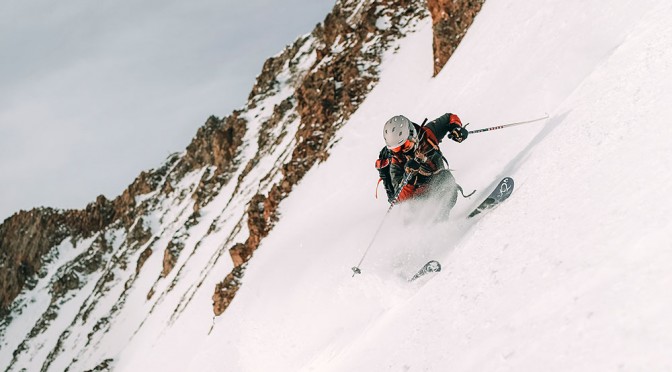by Corey Hockett
It’s no secret—at least not anymore—that Bozeman is a fine place to ski. Very fine in fact—two resorts are within an hour’s drive, and four more sit within striking distance for a day trip. Numerous mountain ranges surround the Gallatin Valley, each one holding excellent terrain for all levels of snow-slayer. So whether you’re grabbing laps at Bridger before work or bagging big lines in the Beartooths on a multi-day expedition, winter in Bozeman means skiing and snowboarding. Grab your sticks. You’ve come to the right place.
Gear
As with most outdoor activities, skiing demands a load of gear—some of which isn’t all that necessary. But other items are downright essential. So let’s start from scratch. What does it take to ski or board? First, you need the planks themselves, bindings to slap on top of them, and a pair of boots to connect you to the apparatus.
When it comes to skis and boards, the variety can be overwhelming. My advice for those starting out is to not take it too seriously. Get a size that fits you. If you’re unsure of what that means, consult your friends or the ski shop.
Boots are a bit more intricate, and a piece of gear not worth skimping on. Weight, stiffness, breathability, and comfort are all things you’re going to want to consider, and they will all differ based on your ability and the type of terrain you’re skiing.
Bindings are the same way; though if this is your first pair, don’t spend your next month’s rent on something you “hope will work out.” Play the field first. Rent from the ski hill, try your buddy’s setup, buy a cheap pair at the second-hand store. Learn how different bindings react to your movements, then loosen the purse strings.
If your heart lies in backcountry exploration, of which options are many, you’re going to need to add quite a few items to that gear list, the first of which is an avalanche course (see p. 28). Sign up and take it seriously. It may cost a couple hundred bucks, but the lessons are worth your life.
Other items necessary for backcountry travel are a shovel, beacon, and probe. Assuming you won’t be snowshoeing, you’ll need some skins as well. And if you’re serious about this, your choice of boots and bindings will reflect that. Lightweight boots with a walk mode are worth their weight in gold, and AT bindings will allow you to transition between uphill and downhill travel. Knuckle-draggers should check out Spark R&D splitboard bindings; the company is based right here in Bozeman.
As far as cold-weather clothing goes, layers are your friend. Have a couple layers, a puffy, extra gloves, and a shell. Carry a neck gaiter and goggles for the way down, and as Mama told you, “Don’t forget your helmet!”
Where to Go
Need we even mention this category? I mean, you’re here, aren’t you? You must know about the iconic Bridger Ridge and the tram at Big Sky. Within 60 minutes of town lies the best in-bound terrain Montana has to offer. Go there, friend, and if you’re yearning for more beta, know that you’ll have to find it for yourself.
Outside of Bozeman’s immediate area are plenty of mom-and-pop hills to put on the list. Discovery, outside of Butte, is a perfect weekend trip with terrain for all levels. Other mentionable ski areas are Maverick near Dillon and Red Lodge Ski Hill west of, yes, Red Lodge. Grand Targhee is also three hours away for those looking for more of a road trip.

